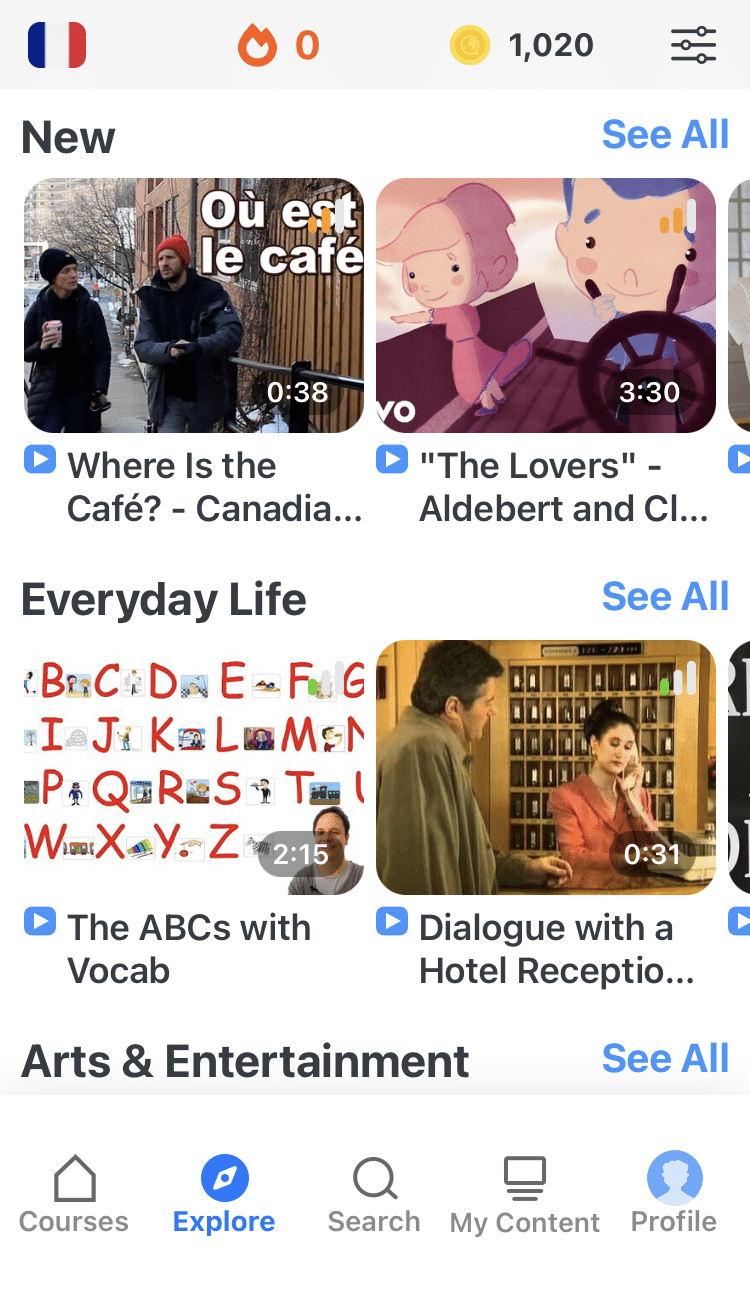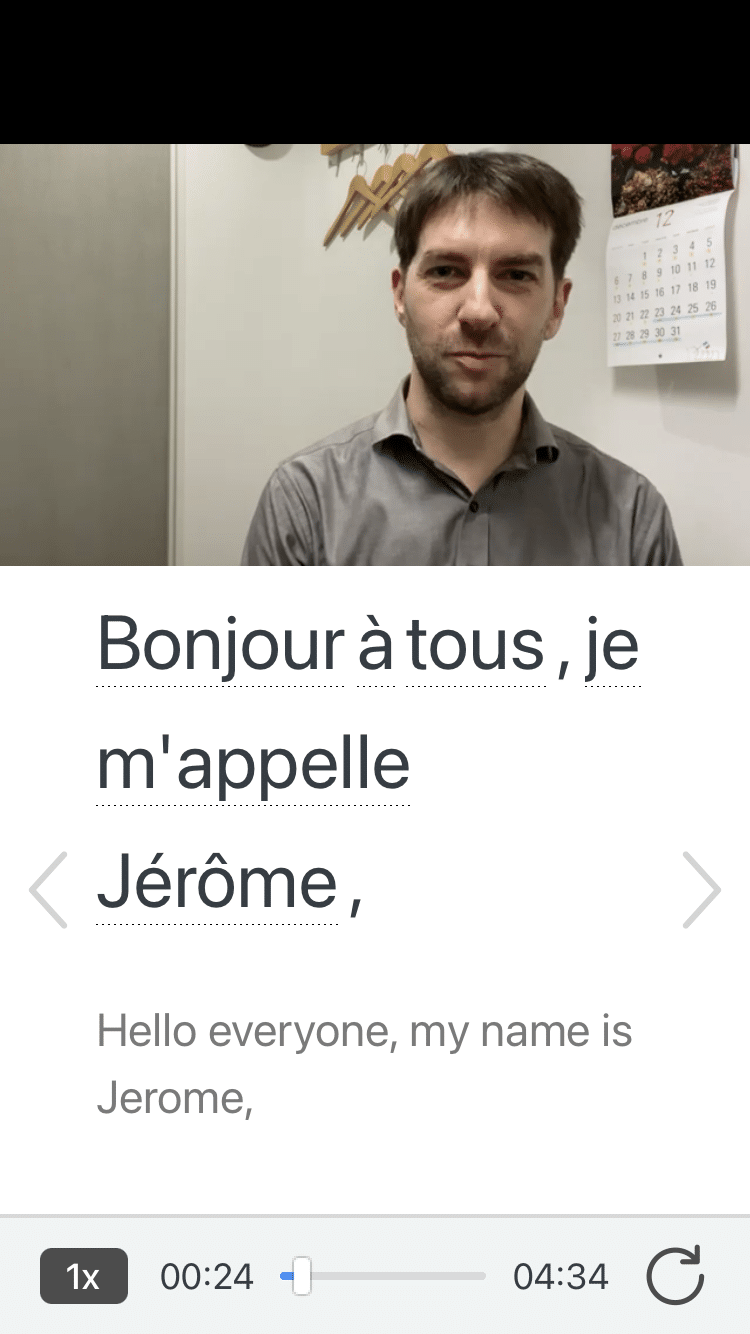
How to Speak With a French Accent
Mastering the French accent is an essential part of learning to speak French fluently.
But trust us, even if your accent isn’t perfect at first, emulating the French accent is better than not trying at all.
So, if you’re wondering how to speak with a French accent, with these tips, you’ll be speaking like Jacques Cousteau in no time.
Contents
- 1. Master French Intonation
- 2. Learn the Small Differences in French Consonants
- 3. Learn to Pronounce the French R Correctly
- 4. Practice Precise Vowel Sounds
- 5. Practice Pronouncing the French Nasal Vowels and U Correctly
- 6. Listen to Other People’s Accents
- And one more thing...
Download: This blog post is available as a convenient and portable PDF that you can take anywhere. Click here to get a copy. (Download)
1. Master French Intonation
If you’re an English speaker and wondering how to have a French accent, you need to realize how important intonation is to mastering a language.
While British English has stricter intonation rules than American English does, neither has quite as strict a tonal rhythm as French.
French uses rising and falling inflection to allow speakers to demonstrate where they are in a thought.
A rising inflection is used when a thought is not yet finished, and a falling inflection is used at the end of a sentence.
Consider the following:
Pierre et Jeanne, qui sont bons amis, sont venus nous voir il y a une semaine. (Pierre and Jeanne, who are good friends, came to see us a week ago.)
A French speaker would naturally use a rising inflection — kind of like the tone you use when asking a question, though not quite as high — on the words Jeanne, amis and voir.
The speaker would then use a falling inflection on the word semaine, to show that the thought is finished.
The same is true when making lists:
Il nous faut du beurre, du sucre, de la farine et des oeufs. (We need butter, sugar, flour and eggs.)
A French speaker would use a rising inflection on beurre, sucre and farine, and a falling inflection on oeufs.
A more intense rising inflection is used to signal questions in French, as in English.
Because French inflection is so strict, French does not allow for tonal emphasis, which English does.
English allows speakers to place tonal emphasis on a word to make that word more important in the sentence.
Consider, for example, the difference in meaning between the following identical sentences in English when the tone is placed on the bolded word:
I went to the park yesterday.
I went to the park yesterday.
The first sentence is a response to an erroneous statement about where the speaker went.
While the second sentence seems to be a response to an erroneous statement about when the visit occurred.
In French, you can’t create this sort of emphasis with your voice.
There are, however, two ways to create the same kind of emphasis in French.
The first way to do this is to use repetition. For example, if you wanted to say the equivalent of the following sentence:
I love it. (emphasis on I)
You could use the following French sentence:
Moi, j’adore. (Literally: “Me, I love it.”)
The second way to create this sort of emphasis in French is by using an extra word:
Franchement, j’adore. (Frankly/really, I love it.)
If you’re having a hard time mastering intonation, listening to native speakers and mimicking what they say sentence by sentence is a good way to master this.
For example, listening to podcasts at Frenchpod101 can help you learn intonation. Their podcasts are short and include transcripts, so you can listen to native speakers and mimic how they speak.
The Youtube channel EasyFrench is another good resource because it has interviews with native speakers on the streets about various topics. These usually include captions to follow along with, as well.
2. Learn the Small Differences in French Consonants
There are a few consonant sounds that you’ll hear in French class or see on the page that you may assume are the same in English and French.
However, these sounds have subtle differences, and mastering these differences can be the key to improving your French accent by leaps and bounds.
The first group of these sounds are consonants known as alveolar consonants.
That’s because they’re pronounced with your tongue up against the alveolar ridge, that protrusion on the roof of your mouth just behind your top teeth.
These sounds are “d,” “n” and “t.”
Try pronouncing a “d” in English, like in the word “dog.” Feel where your tongue is on the roof of your mouth?
It should be right behind the alveolar ridge.
Now move your tongue forward a bit, so that it’s hitting the back of your front teeth.
That’s where a French d is pronounced.
The difference in sound is subtle, but you should be able to hear it.
This video will show you what both d and t should sound like, and n follows the same rule.
Another subtle difference between French and English is the sound that we pronounce when we see the letter “j.”
In English, when we say “j,” for example, in the word “jump,” we’re not saying a true “j,” but rather a diphthong of “d” and “j.”
In French, a j, such as in je (I) is pronounced as a true “j,” similar to the sound we make when we say “azure” or “Asia” in English.
You can find some examples of how j is pronounced in French with this video:
3. Learn to Pronounce the French R Correctly
There are also some consonant sounds that are pronounced very differently in English and in French: the biggest of these is of course the r sound.
Many foreign speakers of French have a tough time with it because it’s pronounced in the back of your throat.
This video tutorial is great for getting it right:
That said, for some folks, getting the r right is very challenging, and so they, quite understandably, decide to say an English “r” in its place.
This is a mistake.
Physically speaking, you actually have another consonant sound in your arsenal that’s closer to a French r than an English “r”: the English “l.”
If you’re having a tough time saying words like réveiller (to wake up) or car (bus), try instead saying *léveiller or *cal.
Pronouncing an “l” where the r should be, is your key to having a French accent.
4. Practice Precise Vowel Sounds
If you want to have a French accent, vowels are going to be one of the toughest things to get perfectly right because they tend to have a bit more leeway.
For the most part, in French, vowels have a more precise placement than in English.
That said, there are a few vowel sounds that English speakers can say fairly easily in French, because they’re basically the same in both languages.
These include:
- The a in ma (my), which is pronounced like the “a” in “father.”
- The i in oui (yes), which is pronounced like the “ee” in “see.”
- The ou in vous (you), which is pronounced like the “ou” in “you.”
As long as you try to make these vowel sounds precise, you probably won’t have much trouble getting them right in French.
Other vowels are subtly different in each language. The “o” sound in eau (water), for instance, might sound like the “o” in “oh,” but there’s a subtle difference.
When we say “oh” in English, we start by saying an “o,” and then we finish with a “w” sound.
To get the French “o” sound right, put your lips into the “oh” sound shape, and pronounce the vowel sound while keeping your lips and tongue perfectly still.
It should sound like this:
The different ways that the letter e is pronounced in French also requires a bit of subtlety.
When there is no accent on an e, it’s pronounced unlike any vowel we have in English, though the closest would be the “u” in “uh.”
Consider the way that je is pronounced in this video:
When the letter e has an accent on it, this changes its pronunciation. Both é and è might seem to sound like the “a” in “ate,” but they’re actually slightly different, both from our “a” and from one another (the latter is more open, the former is more closed).
This video offers a great side-by-side look at the differences:
5. Practice Pronouncing the French Nasal Vowels and U Correctly
French has two “u” sounds, whereas English only has one.
While the ou sound is pretty similar in English and in French, the u in tu (you) is a sound that we just don’t have in English.
To get this sound right, put your mouth into the position you would use if you were going to say the “ee” in “meet.”
Start making that sound, and slowly bring your lips together as though you were saying a “w.”
That “u” sound is the proper way to pronounce the u in tu.
Here’s a video showing you what it should sound like.
It’s really important to get this right, as pronouncing ou in the place of u can have some nasty consequences for comprehension.
Consider the fact that beaucoup (a lot), when pronounced incorrectly, can have you accidentally complimenting the rear end of your interlocutor!
The second major difference is in the nasal vowels, of which there are four in French.
While we sometimes incorporate nasality into English, for example in the word “sing,” we don’t have nearly as many or use them nearly as often as in French.
Here’s a fantastic guide to pronouncing these correctly:
To practice them, try saying this phrase:
Un bon vin blanc. (A good white wine.)
Aside from being a very useful phrase for ordering in a restaurant, it also allows you to pronounce all four of the nasal vowels in French.
Learning to pronounce the French nasal vowels and u correctly is a very important step if you want to master how to speak with a French accent quickly.
6. Listen to Other People’s Accents
It’s important to keep in mind that everyone has an accent.
There are even varying accents in the same language.
So, you need to understand that minor pronunciation mishaps or thick accents are nothing to be afraid of in the process of progressing your French abilities!
I’ll never forget when I was teaching English to a small group of francophones. We were working on a simple activity to build vocabulary and one woman kept giving me the “what in the world are you saying?” look.
Finally, I stopped to ask her if I was speaking too fast or if she had a question about the material. She responded, “No, you are not speaking too fast, but your accent is too strong for me to understand.”
I should clarify that I was lecturing in English! Born and raised in Northern California, I’d never even considered that I had an accent in my own language!
I was literally speechless (which is a terrible thing to be for a language teacher), not to mention utterly confused.
When I found the words, I asked, “my accent?” And she confirmed, “yes, your English accent is very strong. My family in Florida is much easier to understand.”
That was the first time that I truly realized that everyone has an accent.
If you need further proof, the people in the south of France are notoriously known for mocking the accent of their northern counterparts (which, by the way, is the basis for the hilarious film “Bienvenue chez les Ch’tis”).
So the next time you’re feeling self-conscious about having a slight foreign accent, just remember that everyone else has an accent too!
FluentU takes authentic videos—like music videos, movie trailers, news and inspiring talks—and turns them into personalized language learning lessons.
You can try FluentU for free for 2 weeks. Check out the website or download the iOS app or Android app.
P.S. Click here to take advantage of our current sale! (Expires at the end of this month.)
Use the above tips and tricks to help you when speaking with a French conversation partner, and be sure to ask them to correct you if you say something wrong.
Practice makes perfect, especially when mastering the French accent!
Download: This blog post is available as a convenient and portable PDF that you can take anywhere. Click here to get a copy. (Download)
And one more thing...
If you like learning French on your own time and from the comfort of your smart device, then I'd be remiss to not tell you about FluentU.
FluentU has a wide variety of great content, like interviews, documentary excerpts and web series, as you can see here:

FluentU brings native French videos with reach. With interactive captions, you can tap on any word to see an image, definition and useful examples.

For example, if you tap on the word "crois," you'll see this:

Practice and reinforce all the vocabulary you've learned in a given video with learn mode. Swipe left or right to see more examples for the word you’re learning, and play the mini-games found in our dynamic flashcards, like "fill in the blank."

All throughout, FluentU tracks the vocabulary that you’re learning and uses this information to give you a totally personalized experience. It gives you extra practice with difficult words—and reminds you when it’s time to review what you’ve learned.
Start using the FluentU website on your computer or tablet or, better yet, download the FluentU app from the iTunes or Google Play store. Click here to take advantage of our current sale! (Expires at the end of this month.)



